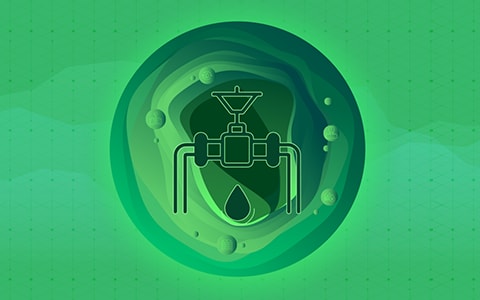Article

Decoding the O&G downturn
A Canadian perspective
While the smarter use of technology and innovative responses to market dynamics are helping oil and gas (O&G) companies worldwide return to or even surpass pre-downturn performance levels, not everyone in the value chain, from downstream to upstream to service companies, are recovering at the same pace. If the industry is to restore both investor confidence and overall health, addressing this imbalance is vital.
That said, the Canadian context remains unique. The ability of this country’s industry to make informed decisions in anticipation of both a longer-than-expected period of low prices and sustained uncertainty requires a closer look at the local sub-sectors.
Taking a cue from recent research on the global O&G industry prepared by Deloitte energy practitioners, we created a series of short commentaries based on the report’s main themes that looks at market divergence and imbalance from a Canadian perspective, focusing on Canadian-specific factors. We hope it will help stakeholders in this country’s O&G industry to make more fully informed decisions in the era of constant disruption.

Decoding the O&G downturn: A Canadian perspective
In our global Decoding the O&G downturn report, we write that “a fit-for-future [oil and gas] industry needs a healthy ecosystem of producers, service providers, shippers, and processors and marketers.” That means the industry will only regain its former strength if the entire oil and gas (O&G) value chain—upstream, oilfield services, midstream, and refining and marketing—is performing at high levels. Otherwise, the gains of a recovery from the downturn that has been dogging the industry since late 2014 will likely benefit only a select few, whereas the losses will affect more or less the entire ecosystem.
Imbalances in the ecosystem continue to hamper recovery, market capitalization remains down, and the industry overall is struggling to attract investment. And this is despite the fact that:
The global economy has expanded 23 percent over the same period
The global O&G industry generated more free cash flow in 2018 than it did in 2013
The overall return on capital (ROC) has essentially recovered to pre-downturn levels (6.9 percent in 2018 compared to 7.3 percent in 2013)1.
If that weren’t enough, the Canadian sector also faces systemic internal pressures, including under-capacity on the midstream side, ongoing investor instability, and uncertainty due to regulatory roadblocks, carbon taxes, accelerating demand for alternative-energy transportation, and a broader global divestment movement.2
The entire business landscape for Canadian O&G has been altered over these past five years. The country’s biggest O&G consumer, the United States, is turning into the world’s largest producer. Activity is shifting from unconventional Canadian plays (e.g., Bakken, Cardium, Viking) to the Permian in the United States. Wide discounts on already discounted prices are rising. Environmental regulations are tightening. And international investments in many oil sands projects and some LNG have retreated.
The result? The market capitalization share of Canadian O&G companies has fallen to a 10-year low of 6.4 percent (from 7.5 percent before the downturn) despite the fact Canada has one of the world’s largest proven oil reserves.
That said, the performance fundamentals of Canadian O&G companies haven’t been bad, achieving an average ROC of 6 percent that, in 2018, was just below the worldwide average of 6.9 percent. Low decline rates of oil sands projects (especially mined oil sands), lower capex requirements to sustain upstream production growth, the contracted nature of the dominant midstream industry, and the integrated structure of many large Canadian companies have all mitigated risks for well-situated companies.
Still, uncertainty remains, and volatility in crude oil and natural gas prices seems here to stay. At the same time, traditional capital management programs, rigid business strategies, lopsided contractual models, moderate digital maturity, and ongoing weak investor confidence will continue to undermine both the global and Canadian industries. Because the Canadian industry isn’t quite large enough to operate in isolation, ignoring trends shaped by unconventional plays or global demand shifts isn’t an option.
After all, the O&G industry is global and connected, which suggests Canadian O&G strategists stand to benefit from gaining value-chain-wide perspectives.
1Decoding the O&G downturn, Deloitte Insights, 23 April 2019, https://www2.deloitte.com/insights/us/en/industry/oil-and-gas/decoding-oil-gas-downturn.html?icid=dcom_promo_featured|global;en
2“Kenney’s stand on oil and gas divestment is likely to leave Alberta out of position,” The Globe and Mail, May 18, 2019; “Clean energy one of Canada’s fastest-growing industries: report,” The Globe and Mail, May 23, 2019; “Renewable energy costs tumble,” www.forbes.com/sites/dominicdudley/2019/05/29/renewable-energy-costs-tumble/; “Toyota speeds up electrified vehicle production,” https://www.theglobeandmail.com/business/international-business/article-toyota-speeds-up-electrified-vehicle-schedule-as-demand-heats-up/
Access the Deloitte Insights report

Exploration and production: A Canadian perspective
First, the good news: the price of oil has recovered from its 2016 low of US$26/bbl, and bankruptcies of North American upstream companies has dropped sharply from an industry high of 110 that same year. However, all North American pure-plays, international independents, integrated oil companies, and national oil companies have underperformed prices by 10-50 percent—especially upstream.1 That’s keeping investor confidence low. Fortunately, current market dynamics are more nuanced than what analysts typically focus on when seeking indicators of an upswing.
In fact, our Decoding the O&G downturn global report reveals a clear pattern among companies with the strongest future-ready portfolios. It begins by emphasizing investment cycles, followed by capitalizing on existing strengths rather than acquisition, attaining and maintaining a balanced fuel mix, and finally, being consistent with strategy and how successes are communicated.
Most top performers have built significant investment flexibility into their portfolios, by either focusing on short-cycle projects or reducing the time to market for mid- and long-cycled projects. US performers in particular are complementing their shale-only strategy with the shortest and most flexible investment cycle. Meanwhile, performers outside the United States are reducing their risk of concentration in a resource or a project by shortening their time to market for mid- and long-cycled projects by as much as two years, and prioritizing smaller projects and resource sizes.
In Canada, the cyclical nature of development planning means the timing of market occurrences has a greater impact than it does in other markets. For example, price differentials widened dramatically in late 2018, resulting in a dreary 2019 drilling season that’s expected to be on par with a decidedly dismal 2016. It’s also noteworthy that the majority of large companies are integrated, with a significant contingent of independent exploration and production companies (E&Ps) filling in the intermediate and junior spaces. These independent E&Ps have been among the hardest hit in the downturn, leading to a split in the Canadian upstream field between a handful of integrated majors and everyone else.
The Canadian market also struggles with natural gas prices, due to pressures from growing production in the United States and the lack of available markets. Many upstream producers are vulnerable to this situation, and they’ve had to shift from relying on the local spot market for sales toward creating a diversified marketing strategy.
Meanwhile, lack of access to capital due to environmental and other regulation as well as perceived valuations of Canadian assets have prompted international companies to leave the Canadian market. This has had the effect of reducing the Canadian sector’s access to the global banking system. All these pressures have affected the mergers and acquisitions market dramatically, with limited or no major transactions in the last 12 months.
The Canadian situation is further complicated by the improved but ongoing discounting of heavy oil and bitumen, as well as constricted access to tidewater and foreign markets. On a more positive note, in restructuring costs to be more competitive and transforming balance sheets to generate more free cash flow, the industry is capitalizing on the digital evolution for next-level gains and restoring upstream market optimism.
1Decoding the O&G downturn. Deloitte Insights, 23 April 2019, https://www2.deloitte.com/insights/us/en/industry/oil-and-gas/decoding-oil-gas-downturn.html?icid=dcom_promo_featured|global;en
Access the Deloitte Insights report

Oilfield services: A Canadian perspective
Globally, the oilfield service (OFS) sector had been something of a best supporting actor, helping the industry overcome significant technical hurdles in offshore and shale developments. Recovery in the segment itself continues to lag, however, remaining at half of its pre-downturn levels. This makes it the least-valued O&G segment in terms of market valuation, hit by staggering investor losses of US$300 billion by the end of 2018.1
In Canada, oilfield service companies continue to be more targeted in their scope of services than their United States counterparts. Some companies have focused on maintenance capital and service rig work. This strategy has allowed them to weather the downturn better than others. Other companies have focused on specific regions of the basin, developing technologies and expertise that will remain valuable in the long run even as their margins continue to be squeezed.
Overall, the fate of Canadian OFS companies is of concern. We have seen players looking to the US arena for growth possibilities or applying their core competencies outside the energy field, such as performing similar drilling and/or services work for municipalities. Such solutions are piecemeal at best, and the sector’s fortitude will continue to be tested as producers continue to push out projects by six months to a year.
Heightened scrutiny about decommissioning liabilities, particularly from lending institutions, may drive activity in this segment, but most reputable companies were already actively reducing their liabilities. Cash flows will continue to be a nagging issue in the sustained downturn, and improvement could be marginal as companies remain tilted toward maintenance or production.
Canadian companies are niche, or segmented, players, unlike the large, one-stop shops like those in the United States. The general trend to deeper and more complex wells–and the corresponding increase in dollars per well required for completions–will result in at least some companies expanding and taking on service rigs. However, diversification over and above that could be negligible, as it’s easy to plan for but difficult to execute.
In short, OFS companies are investing in technology and alternate business models while Canadian producers are still cutting capital expenditures or even downsizing altogether.2 Nonetheless, a heavily weathered sector is ultimately also a wiser sector, and companies that focus on flexibility in their business models and service offerings–including being nimble and timely with their scalability and/or performance-based contracting–will continue to find their way out of the storm.
1Decoding the O&G downturn, Deloitte Insights, 23 April 2019, https://www2.deloitte.com/insights/us/en/industry/oil-and-gas/decoding-oil-gas-downturn.html?icid=dcom_promo_featured|global;en
2“Spanish energy giant Repsol cuts 30% of Canadian staff with layoffs in Calgary, Chauvin and Edson,” Financial Post, June 19, 2019” https://business.financialpost.com/commodities/energy/exclusive-spains-repsol-cuts-30-of-canadian-staff-in-global-restructuring, June 20, 2019
Access the Deloitte Insights report

Midstream: A Canadian perspective
As highlighted in our global Decoding the O&G downturn report, the midstream sector’s key role in the overall energy supply story continues to evolve. Traditionally an investment darling due to its consistent free cash flows stemming from a stable, fee-based business model, the sector at the international level has been affected by the short-cycled production profile of shale, as well as pressures brought on by altered trade flows and routes.
The upside is that global O&G supply and demand growth has improved bottom lines worldwide, netting investors as much as US$19 billion over the past five years.1 And with natural gas, LNG especially, coming on strong as “the fuel for the future,” the sector is reconfiguring itself in the face of new realities. (Read Andrew Botterill’s recent blog, Betting big: LNG trends in Canada, for more.) The long-game perspective points to a robust midstream growth profile.
With capital in Canada remaining constrained across the energy space, midstream has been the most active segment of the domestic energy sector overall. Cross-border deals, along with startups spinning off from non-core divestment, make the midstream a relatively stable space from an investor perspective. Longer-term contracts and adjusted agreements on turnaround costs have been the order of the day for midstream companies looking for balance with producers. The evidence for this is in the number of partnerships on infrastructure projects and carve-outs by producers of midstream assets that helped reduce debt and also spur startups.
The primary challenge for the Canadian midstream remains projects that have to survive their passage through regulatory, political, and social environments, even with the federal government’s recent re-approval of the Trans Mountain pipeline. This challenge is complicated by the uncertainty of carbon taxes and legal challenges, shifts in consumer demand regarding transportation, and a broader divestment movement at the global level.2
In sum, while regulatory pressures will continue, major projects are progressing underway and are expected to maintain the dominance of the midstream segment in Canada.
1Decoding the O&G downturn, Deloitte Insights, 23 April 2019, https://www2.deloitte.com/insights/us/en/industry/oil-and-gas/decoding-oil-gas-downturn.html?icid=dcom_promo_featured|global;en
2“Kenney’s stand on oil and gas divestment is likely to leave Alberta out of position,” The Globe and Mail, May 18, 2019, June 20, 2019; “Clean energy one of Canada’s fastest-growing industries: report," May 23, 2019, June 20, 2019; “Renewable energy costs tumble,” Forbes, May 29, 2019, https://www.forbes.com/sites/dominicdudley/2019/05/29/renewable-energy-costs-tumble/ June 20, 2019; “Toyota speeds up electrified vehicle production,” The Globe and Mail, June 7, 2019 https://www.theglobeandmail.com/business/international-business/article-toyota-speeds-up-electrified-vehicle-schedule-as-demand-heats-up/, June 20, 2019.
Access the Deloitte Insights report

Refining and marketing: A Canadian perspective
If there’s one sector of the O&G industry that benefitted from the downturn of late 2014, it’s the global refining community. Lower commodity prices stemming from the initial downturn, the outright collapse in 2016, and then flat oil prices through 2018 allowed margins to effectively triple over the past five years.1 Traditionally considered the poor cousin of the O&G family, refining has become something of a refuge in which companies seeking safe haven have been able to weather the current storm.
While the O&G downturn has proven a safe harbour for refiners around the world, it hasn’t been the case in Canada. The industry here lacks a pure-play refining segment, financing for projects across the board remain tight, and takeaway capacity remains constricted.
In the larger picture, relying on US refining to absorb product means US market dynamics will continue to have a significant impact on the Canadian industry. This is something of a good news/bad news scenario. The complexity of many US refineries remains a huge plus for Canadian heavy oil producers, as the supply from Mexico and Venezuela has dropped in recent years and refiners are looking to Canada to fill gaps. At the same time, however, bottlenecks and downtime in the Gulf of Mexico refining region can play havoc with access to refining capacity, while key infrastructure projects such as the Keystone XL pipeline can seem interminably delayed, approvals notwithstanding.
Closer to home, the Canadian refining sector has been a lifesaver in some surprising ways. Partial upgrading, as driven by the oil sands, has been around since the Scotford plant went into operation in the 1990s, but it’s seen a meaningful uptick as a hedge against diluent pricing risks and potential condensate shortages. Some Canadian refiners have branched out into niche markets, investing in white oil and other highly refined products, including fertilizers. Others have headed to the other end of the spectrum, investing and innovating in lower-end but remarkably lucrative refined products such as asphalt.
The refining and marketing segment is generally small in Canada, but some key factors distinguish it from international counterparts, especially the United States. With the focus south of the border on tight oil production, traditional refining is still king. The refining segment there is not so much undergoing consolidation as asset realignment to individual companies’ core strategies: more short-term risk or even a bit of pain in favour of longer-term gain and market advantage in recovery.
1Decoding the O&G downturn. Deloitte Insights, 23 April 2019, https://www2.deloitte.com/insights/us/en/industry/oil-and-gas/decoding-oil-gas-downturn.html?icid=dcom_promo_featured|global;en
Access the Deloitte Insights report

Looking ahead: A Canadian perspective
Most of the issues and challenges facing the global O&G industry are well portrayed in our Decoding the O&G downturn1 report. They are further underscored by an imbalance across the entire O&G ecosystem, and where volatility appears to be permanent.
Several shortcomings of the industry are also highlighted, including counterproductive adherence to inflexible business models, outdated capital management strategies (e.g., “growth at any cost”), and falling research-and-development spending in general. Adding to the imbalance are contractual models that remain out of sync with a shift in the investment cycle (from a long cycle to a short one), supply (from under- to over-supply), and risk (from sub-surface to, increasingly, above-ground). Some or all of these have altered the risk and investment preferences of many investors in O&G companies.
At a glance, it might appear the Canadian industry is caught in something of a pincer movement: in addition to challenges the industry worldwide is experiencing, Canada’s O&G sector faces additional uncertainty, with the ongoing lack of market access and a hyper-conservative financial environment further weakening investor confidence.
Yet, in many ways, Canada has long illustrated the resilience of the energy industry. In its earliest years it faced a harsh climate and low capitalization conditions, then innovated through economic and technical hurdles during the early days of oil sands and shale development. Now, companies are increasingly working in collaboration to find solutions to contemporary political and social demands.
Does that mean it’s only a matter of time and hard work before investors return and full recovery is achieved? Hardly. Decoding the O&G downturn highlights several major strategic areas O&G companies need to focus on now in order to be fit for the future, including:
- Diversification, including through investments in energies such as solar, wind, and biofuels, and/or through alternative structures of financing, public equity and debt issuance with private equity project co-investment, and cross-segment cost-sharing.
- Right-sizing portfolios, by advancing operational excellence and transforming business models, including assessing where a company’s sole competitive advantage lies and where it's better off partnering with peers/vendors.
- Capitalizing on digital ROI, such as using analytics and platforms that can be readily adapted to clients’ rapidly changing needs, or linking operations with the larger markets through advanced analytics, allowing them to be in sync with shifting regional supply and demand balances.
- Performance-oriented contracts and increased risk-sharing, providing incentives for improved performance while reducing the impact of cyclical price downturns on one particular segment.
- Investing in strategic communication, starting by acknowledging the growing importance of carbon emissions, sustainability, and even renewables, as is done by the European super majors that have consistently outperformed the other International Oil Companies (IOCs) over the past five years.2
Today’s investors aren’t just following oil-price cycles to time their investments. They also expect to hear about flexible short-term and compelling long-term strategies based on a wider set of disruptive possibilities. In addition to transparent, accommodating, and compelling communication, a smarter and tighter integration of approaches across the O&G ecosystem is increasingly critical for building a long-lasting relationship with a company.
If history is any teacher, the Canadian industry ultimately is more than capable of maximizing its considerable advantages.
1Decoding the O&G downturn. Deloitte Insights, 23 April 2019, https://www2.deloitte.com/insights/us/en/industry/oil-and-gas/decoding-oil-gas-downturn.html?icid=dcom_promo_featured|global;en
2 Ibid.
